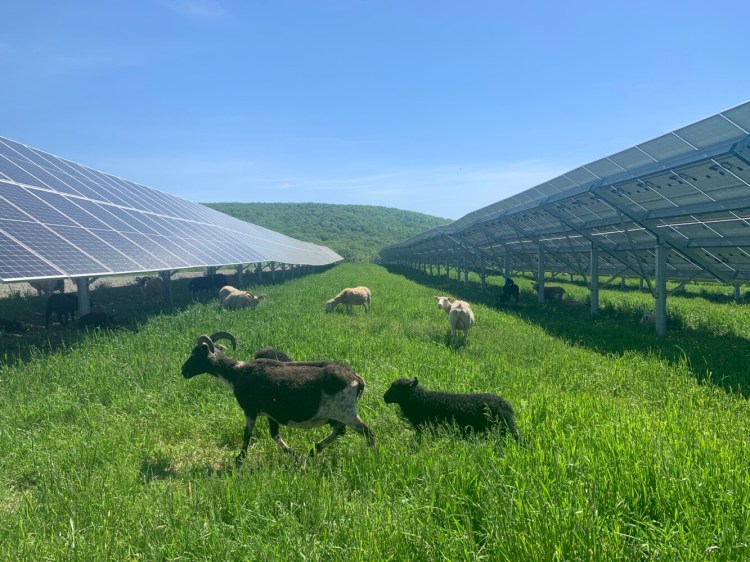An emerging trend in pairing solar projects with agriculture is solar grazing, the practice of using livestock — typically sheep — to manage the grass that grows under the panel arrays.
Solar grazing has multiple benefits. Livestock owners get extra income. No (gas-powered) lawn mowers are needed. And while the landscape crew may nap in the shade under the panels, it doesn’t take a lunch break.
In Skowhegan, sheep owned by Michael Dennett of Crescent Run Farm in Jefferson have started munching under the 10,500 panels at a solar farm developed by ReVision Energy that supplies power for a handful of municipal buildings and a public school. Fortunat Mueller, a ReVision Energy co-founder, said it’s the first solar grazing arrangement in Maine.
Pairing solar and agriculture presents an opportunity for farmers who have some marginal acreage, Mueller said, and are looking to diversify their income. He said Dennett’s flock is scheduled to work at other solar projects this summer.
Solar grazing is becoming common in Massachusetts and New York, and developers working in Maine are bringing that experience here.
Boston-based Nexamp has eight projects underway in Maine and is identifying “shepherd partners” for the 2022 growing season, according to Keith Hevenor, a company spokesman.
Nexamp also is using a pollinator seed mix that features native vegetation to increase bee activity.
This also is a national trend. A couple of big seed companies have teamed up to produce Fuzz and Buzz Seed Mix for solar sites in the Northeast, according to the American Solar Grazing Association, which promotes sheep and solar.
Send questions/comments to the editors.




Comments are no longer available on this story